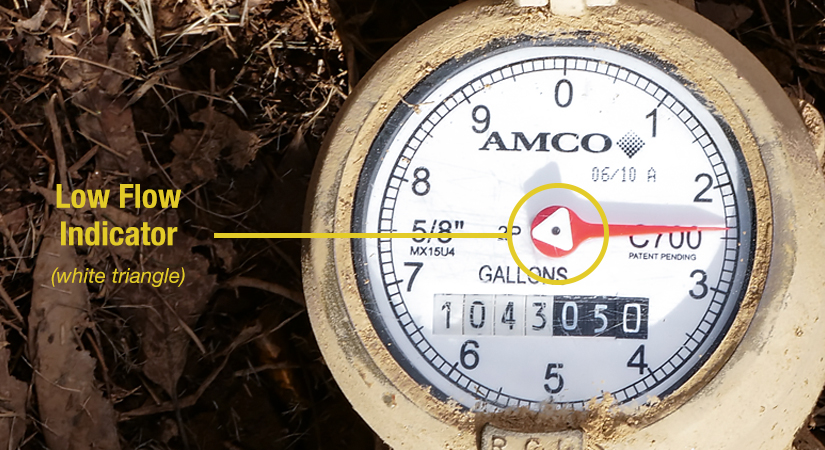Water Leak Checks
A slow leak of seven drips per minute from the faucet can waste up to one gallon of water in one day. That’s roughly 365 gallons per year! A leaky shower faucet dripping at a rate of one drip per second can waste more than 250 gallons per month! While some leaks are obvious and can be fixed quickly, others go undetected driving up your water and wastewater costs. Leaks that occur between the meter and the house are the responsibility of the homeowner. Leaks from the meter or pipes leading from the main to the meter are the responsibility of Jackson Energy Authority. To check for water leaks, try the following options:
Slow Leak Test
- Turn off all water-using appliances and fixtures all around your home, both inside and outside. Make sure water is not being used by anyone or anything in the home.
- Locate your water meter and access the meter by lifting the water meter box lid and raising the hinged face cap (if applicable) to expose the face.
- Look for the low flow indicator (small red, blue or white arrow, star or gear shape) on the meter face and determine if there is any spinning or movement.
- If there is movement, there may be a leak somewhere in or around your home.

Water Usage Comparison
- If the low flow indicator does not indicate movement, record the numbers from the odometer-style window. Visit Reading Your Water Meter for details.
- Do not use any water around the home for at least an hour.
- Take another reading from the odometer-style window and record the numbers again, comparing them to the first reading.
- If the second reading is higher, there may be a leak.
- Additionally, compare your current water usage month to the same usage month of the previous year on your utility bill. Unusually high water usage may indicate a leak.
Toilet Tank Test
- Remove the lid of the toilet tank.
- Drop in several drops of food coloring or one leak detector dye tablet.
- Replace the lid. Do not use the toilet or flush the toilet while testing.
- Wait at least 15 minutes.
- Check the water in the toilet bowl. If you see colored water, you have a tank leak.
- If you have a tank leak, check the following: overflow tube to make sure water is a half inch below the top of the tube; lift chain to make sure it isn’t catching on anything; flapper to ensure it’s seating properly and flush handle for proper functioning.
Swimming Pool or Spa Test
- Turn off the autofill (if present)
- Place a clear container or bucket on the topmost pool step if possible without submerging it. Use a large rock or brick to weigh down the container.
- Fill the bucket with water so that the water level is the same as the pool water.
- Mark the water level of the bucket on the inside of the bucket.
- Mark the water level of the pool on the outside of the bucket.
- Wait at least three days as this lets natural evaporation occur.
- After three or more days, compare the two water levels. If the pool water level dropped more than the bucket water level you may have a leak. Contact a pool contractor for further testing.
Water Supply Checks
- Remove the lid of the meter box and check the inside. If there is water present and it’s not due to rain or irrigation run-off, this may indicate a leak in the supply line.
- Check the area where the supply line rises above the ground and/or enters the house. If the soil is constantly damp around the areas, it may indicate a leak.
Fixture Checks
- Check faucets, showerheads and outside faucets for any visible leaks.
- Check your laundry water supply valve and hose.
- Watch for soggy spots in your yard as this might be a sign of a leak in the underground pipes.
- Check your in-ground irrigation system for damage or faulty equipment.
- Check around pool pumps and surrounding areas for signs of water leaks.
